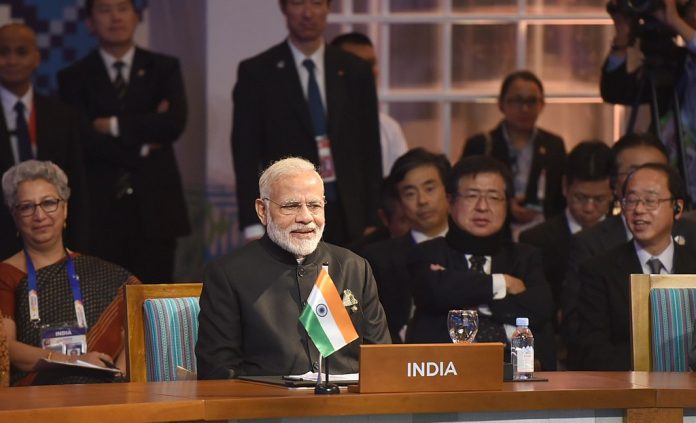RCEP – Regional Comprehensive Economic Partnership – is a free trade agreement in the Indo-Pacific Region between Association of South East Asian Nations (ASEAN) and its key partners – Australia, China, Japan, New Zealand, and South Korea. Although India was initially part of the agreement, this Asian economic powerhouse opted out of the deal in November 2019. Despite India’s withdrawal, ASEAN Secretary-General Datuk Lim Jock Hoi confirmed that the agreement is ready to be signed by the end of 2020 and will come into force in 2021. When that happens, RCEP will be the world’s largest trading bloc, accounting for one-third of the world’s GDP and half of the world’s population under its umbrella. So, where are we now in this trade deal?
For starters, India’s withdrawal from RECP has made headlines. Judging from the tones of Prime Minister Narendra Modi, he is not keen on exposing India’s vibrant service and agricultural sector to its main competitors, especially China. With the escalating tensions between Chinese and Indian militaries in the disputed Himalayan border area back in June the prospects of India changing its mind are getting slimmer.
Motivated by fear of unfairness and imbalance in the agreement, India seems to adopt protectionist policies to prioritize its domestic production and consumption instead. Experts have argued that Indian markets will be flooded with Chinese goods and services if India participated in RCEP, thus killing India’s competitiveness in the long run. More specifically, trade deficits between India and RCEP members have been huge, with China accounting for $54 billion alone. The main sectors that could do damage to India’s economy are the dairy, textile, marine, pharmaceutical, iron, steel, and non-ferrous metals. This means that jobs for Indians will significantly decrease and Indian SME (small-medium enterprise) business owners will face many challenges by the Chinese dragons.
So, what is India seeking? There are a number of agendas and conditions : (1) keep dairy and certain textiles out of the pact; (2) stop imports or raise duties in case of oversupply of foreign products and services; (3) stricter investment climate and dispute resolution; (4) stricter ‘origin of product’ norms; and (5) change in base tariffs from 2014 to 2019. All of these proposals could mean a somewhat compatible climate for a level playing field for Indian producers, but it is not so easy.
Indian policymakers may now be asking questions such as “Does walking away from RCEP hurt India?” However, with India’s withdrawal, countries who support RCEP will also lose out on the potential to tap into the Indian market – a target of many countries in the face of the current global economic recession the world is facing. RCEP which is revolutionary in its own right will prove to be the biggest trade deal ever orchestrated since of the opening up of global market liberalization.
What can be seen from India’s RCEP decision is that multilateral free trade agreement is in disarray. Nations are forced to rethink about their strategies and turn to regional trading blocs as a solution when there is growing frustration that the World Trade Organization has allowed some countries to get away with too much advantages for too long.
The pivot and the focus are now plurilateral in nature, specifically in the Asia-Pacific region. When comparing with unreachable high standards of the Comprehensive and Progressive Agreement for Trans-Pacific Partnership (CPTPP), countries in Asia-Pacific may feel more comfortable in joining RCEP, although India thinks otherwise. Even though it may be too late now for India to join, RECP without India will be a less significant trading bloc despite the fact that the process and collaboration among RECEP members may have now become smoother.
Some have criticized RCEP as being less harmonized in standards and being “China-led”, while not incorporating environmental and human conditions into the mix. These concerns may be valid in its own right, but what is clear from the stance from RCEP members is that this regional agreement will respond to the deficiencies of the global trading order.
In sum, RCEP was initially a response to the Trans-Pacific Partnership (TPP) and the inclusion of China in RCEP is only seen as part of the deal, although it is undeniably true that China is a major player in the agreement. Thus, India’s fear and suspicion are understandable and valid in its own rights, given its domestic politics and political resistance from certain constituencies. However, withdrawal from RCEP pose a huge setback to India’s intention to play a leading role as a promoter of multilateral trade agreements.
India is a powerful middle power that has the potential to rise as an emerging superpower; however, its RCEP departure may be seen as a constraint to its superpower ambitions.
Visal Chourn is a Master of Public Policy student at Techo Sen School of Government and International Relations, the University of Cambodia and a sub-editor at the ASEAN-Australia Youth Strategic Youth Partnership. He has a BA in philosophy from Seattle Pacific University. All views expressed are his own.


